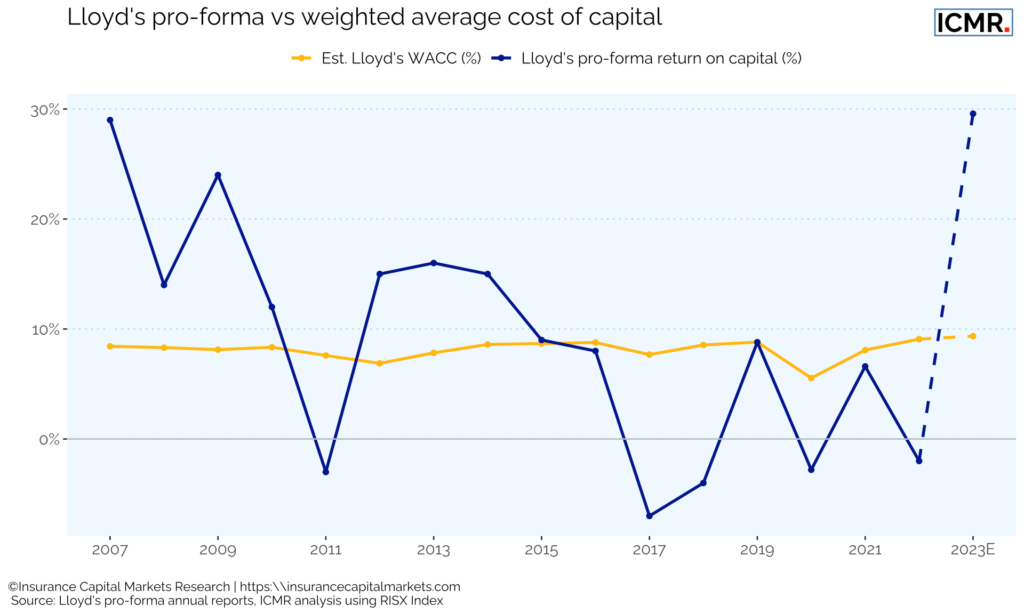Lloyd’s on-track to achieve best returns on capital for over 15 years: ICMR

The Lloyd’s of London insurance and reinsurance marketplace is on-track to achieve its best returns on capital in more than 15 years, according to analysis from Insurance Capital Markets Research.
Importantly, ICMR noted, “It is the first time in the last decade that Lloyd’s has, in the aggregate, exceeded its estimated weighted average cost of capital (WACC).”
Lloyd’s announced what it called an outstanding 2023 result last week, with an underwriting profit of £5.9 billion and an investment return of £5.3 billion, which together delivered “its best ever profit” of more than £11 billion, ICMR explained.
As a result, Lloyd’s is “on course to achieve its best returns on capital for over 15 years,” the ICMR analysts said.
The ability of an investment to deliver returns exceeding cost-of-capital is key for any allocator and when investors look at Lloyd’s, it is considered no different. So the strong profit of 2023 could be a driver for rising investor interest in allocating to Lloyd’s by whatever route they choose to use.
ICMR’s analysis helps in making just how good 2023 was more understandable.
Using its RISX equity index of publicly traded parent companies at Lloyd’s, ICMR calculates an ‘as-if’ market capitalisation of Lloyd’s and its beta (a measure of a stock’s volatility in relation to the overall market), which the analysts note are key inputs in the calculation of the WACC figure.
The chart below from ICMR shows Lloyd’s pro-forma returns to investors from 2007 – 2022, along with ICMR’s estimation of Lloyd’s pro-forma return on capital and WACC up to 2023, based on Lloyd’s recent announcement.
ICMR explains how to read the chart above, “The chart shows that until 2014, Lloyd’s pro-forma returns generally exceeded WACC, with the exception being 2011 with its multiple severe catastrophe losses.
“The market was softening for several years thereafter before delivering a return in excess of WACC in 2023.”
ICMR also highlights just how dramatic the change in fortunes has been, saying, “It should be noted that this return to exceeding WACC has still taken three years of market rate hardening since the pandemic, which illustrates just how soft the market had become.”
Some investors that allocated to the Lloyd’s market in 2023 are set for stellar returns, the data suggests.
But, what the data really makes clear, is that a balanced investment across a spread of Lloyd’s underwriting entities, or an index-like investment into the Lloyd’s market, could have delivered a fantastic return to investors for the last year.
It helps to drive home how attractive investments into Lloyd’s can be, while also laying bare the effect that the over-softening of insurance and reinsurance had in eroding the return potential of a market like Lloyd’s.
Also read: Industry must focus on investor needs and transparency: Lloyd’s CFO Keese.






